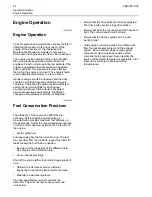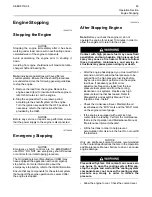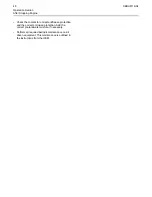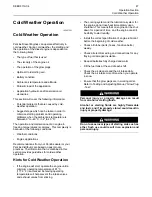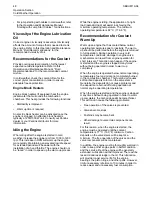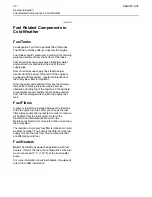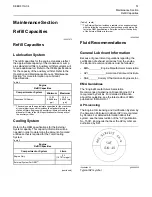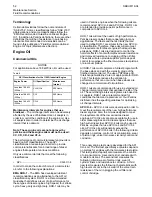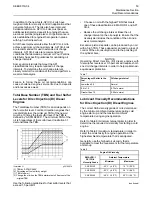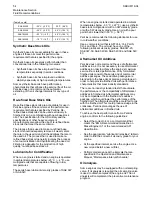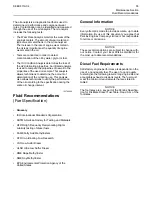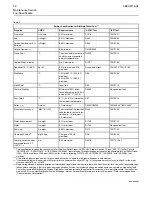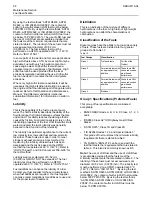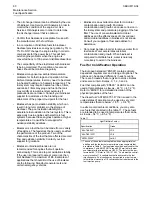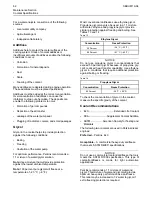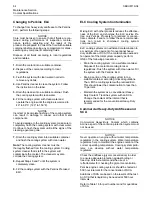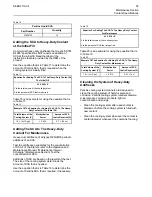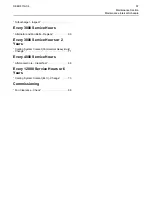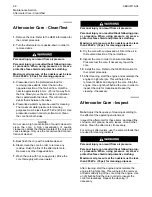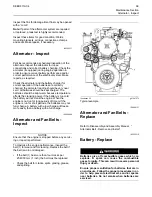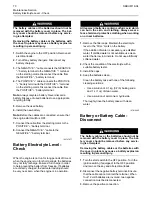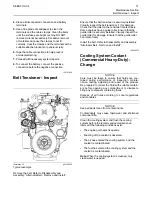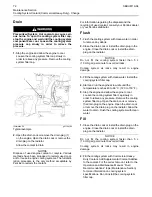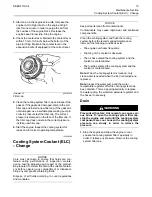
By using the test methods “ASTM D5453, ASTM
D2622, or ISO 20846 ISO 20884”, the content of
sulfur in low sulfur diesel (LSD) fuel must be below
500 PPM 0.05%. By using the test methods “ASTM
D5453, ASTM D2622, or ISO 20846 ISO 20884”, the
content of sulfur in ultra low sulfur (ULSD) fuel must
be below 15 PPM 0.0015%. The use of LSD fuel and
the use of ULSD fuel are acceptable provided that
the fuels meet the minimum requirements that are
stated in table 9 . The lubricity of these fuels must not
exceed wear scar diameter of 0.52 mm
(0.0205 inch). The fuel lubricity test must be
performed on a HFRR, operated at 60 °C (140 °F).
Refer to “ISO 12156-1 ”.
In some parts of the world and for some applications,
high sulfur fuels above 0.5% by mass might only be
available. Fuel with very high sulfur content can
cause engine wear. High sulfur fuel will have a
negative impact on emissions of particulates. High
sulfur fuel can be used provided that the local
emissions legislation will allow the use. High sulfur
fuel can be used in countries that do not regulate
emissions.
When only high sulfur fuels are available, it will be
necessary that high alkaline lubricating oil is used in
the engine or that the lubricating oil change interval is
reduced. Refer to this Operation and Maintenance
Manual, “Fliud Recommendations (Genernal
Lubrication Information)” for information on sulfur in
fuel.
Lubricity
This is the capability of the fuel to prevent pump
wear. The fluid's lubricity describes the ability of the
fluid to reduce the friction between surfaces that are
under load. This ability reduces the damage that is
caused by friction. Fuel injection systems rely on the
lubricating properties of the fuel. Until fuel sulfur limits
were mandated, the fuel's lubricity was generally
believed to be a function of fuel viscosity.
The lubricity has particular significance to the current
low viscosity fuel, low sulfur fuel and low aromatic
fossil fuel. These fuels are made in order to meet
stringent exhaust emissions. A test method for
measuring the lubricity of diesel fuels has been
developed and the test is based on the HFRR
method that is operated at 60 °C (140 °F). Refer to
“ISO 12156 part 1 and CEC document F06-A-96” for
the test method.
Lubricity wear scar diameter of 0.52 mm
(0.0205 inch) MUST NOT be exceeded. The fuel
lubricity test must be performed on a HFRR,
operated at 60 °C (140 °F). Refer to “ISO 12156-1 ”.
Fuel additives can enhance the lubricity of a fuel.
Contact your fuel supplier for those circumstances
when fuel additives are required. Your fuel supplier
can make recommendations for additives to use and
for the proper level of treatment.
Distillation
This is an indication of the mixture of different
hydrocarbons in the fuel. A high ratio of light weight
hydrocarbons can affect the characteristics of
combustion.
Classification of the Fuels
Diesel engines have the ability to burn a wide variety
of fuels. These fuels are divided into four general
groups: Ref to table 10
Table 10
Fuel Groups
Classification
Group 1
Preferred fuels
Full life of the
Product
Group 2
Permissible fuels with
an appropriate fuel
additive
These fuels MAY
cause reduced en-
gine life and
performance
Group 3
Permissible fuels with
an appropriate fuel
additive
These fuels WILL
cause reduced en-
gine life and
performance
Group 4
Biodiesel
Group 1 Specifications (Preferred Fuels)
This group of fuel specifications is considered
acceptable:
• EN590 DERV Grade A, B, C, E, F, Class, 0, 1, 2, 3
and 4
• “BS2869 Class A2” Off-Highway Gas Oil Red
Diesel
• “ASTM D975”, Class 1D and Class 2D
• “JIS K2204 Grades 1,2,3 and Special Grade 3”
This grade of fuel must meet the minimum lubricity
requirements that are stated in table 9 .
• 5% FAME to “EN14214” can be mixed with the
fuel that meets the requirements that are stated in
table 9 . This blend is commonly known as B5.
Note:
The use of LSD fuel and the use of ULSD fuel
is acceptable provided that the fuels meet the
minimum requirements that are stated in table 9 . The
lubricity of these fuels must not exceed wear scar
diameter of 0.52 mm (0.0205 inch). The lubricity test
must be performed on a HFRR, operated at 60 °C
(140 °F). Refer to “ISO 12156-1 ”. By using the test
methods “ASTM D5453, ASTM D2622, or ISO 20846
ISO 20884”, the content of sulfur in LSD fuel must be
below 500 PPM 0.05%. By using the test methods
“ASTM D5453, ASTM D2622, or ISO 20846 ISO
20884”, the content of sulfur in ULSD fuel must be
below 15 PPM 0.0015%.
58
SEBU8119-04

